Australian Tropical Rainforest Plants - Online edition
Flindersia pimenteliana F.Muell.
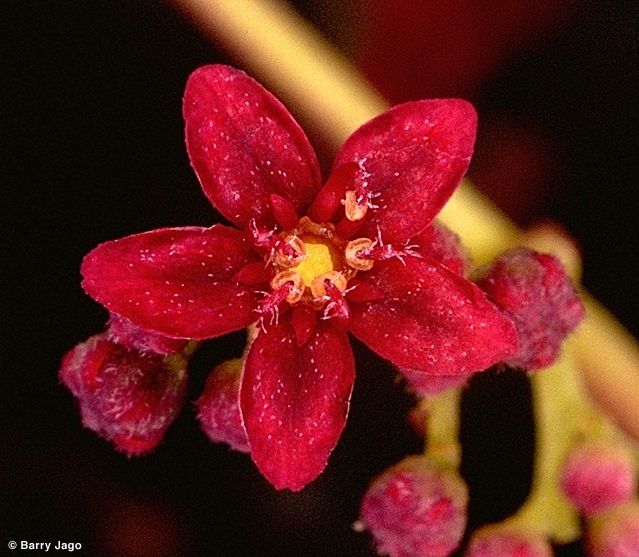
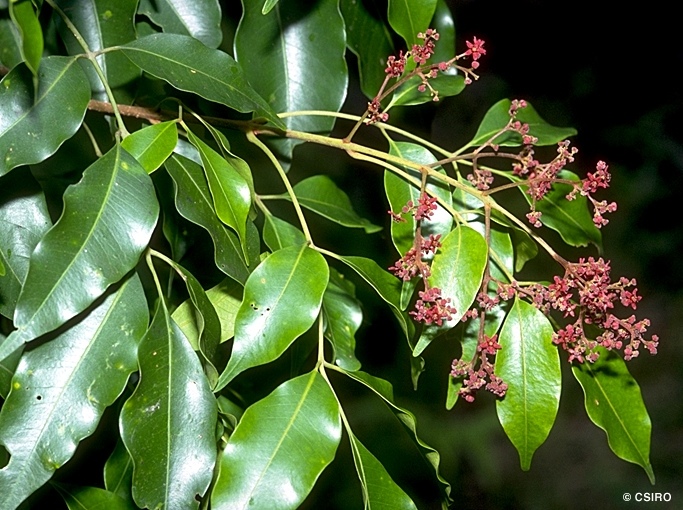

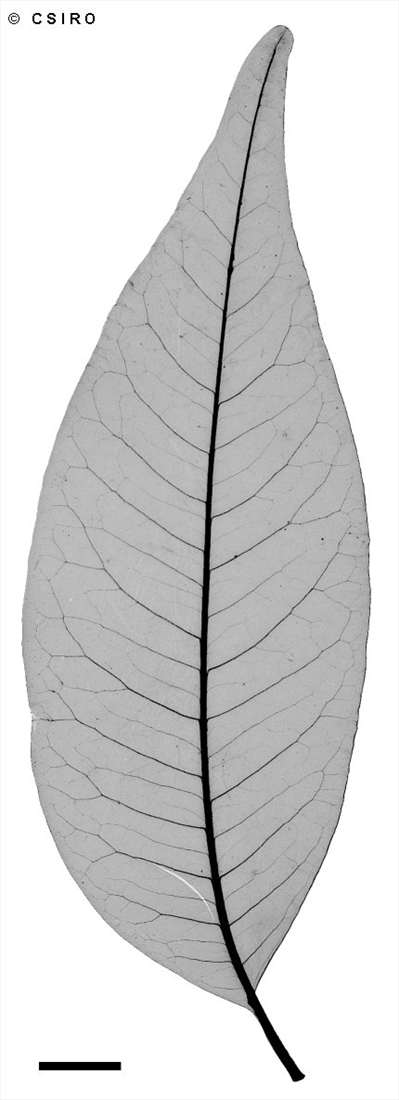
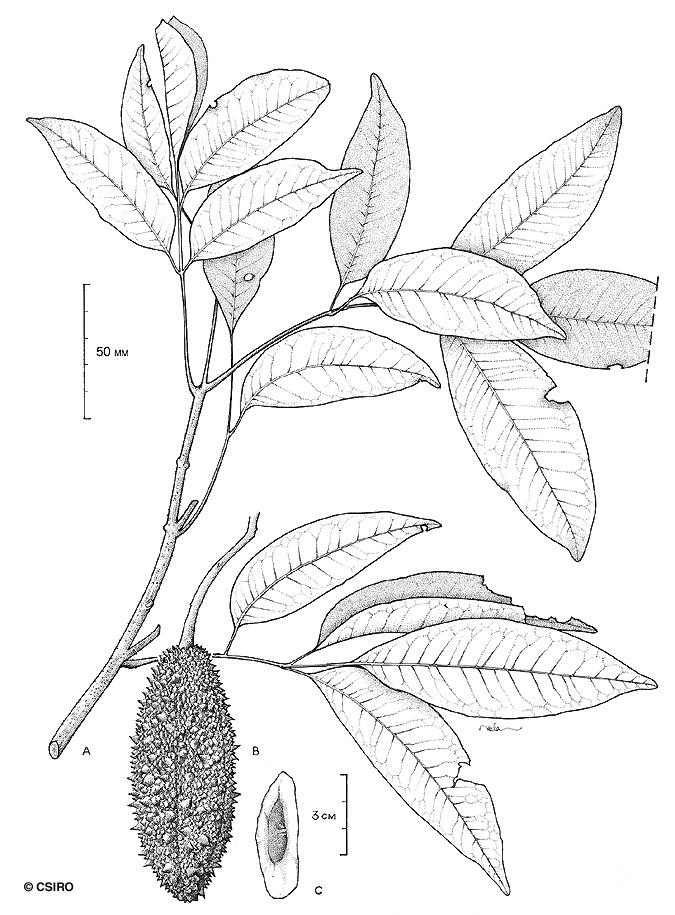
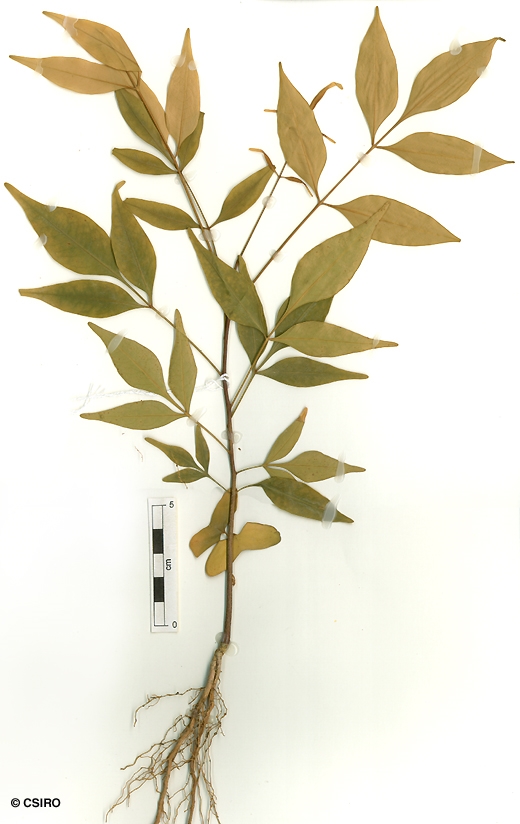

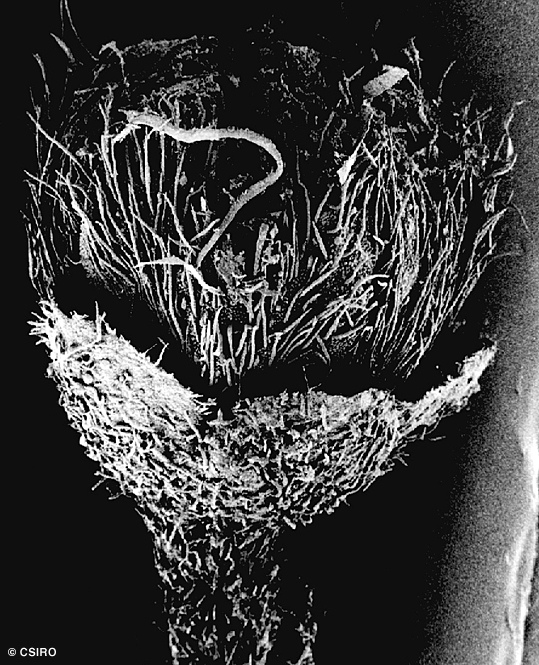
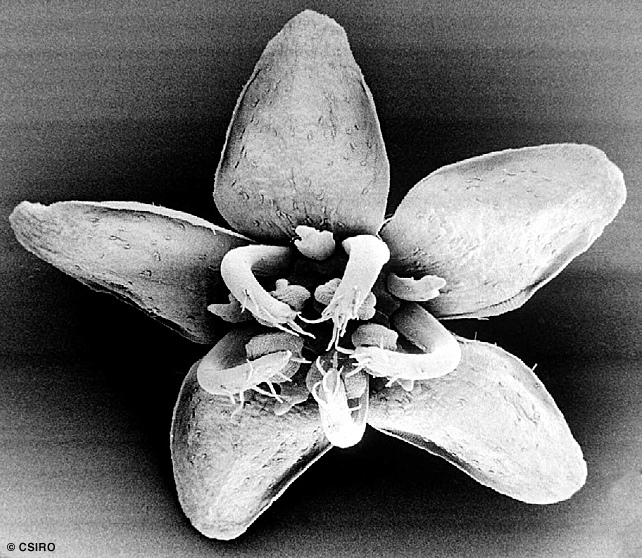
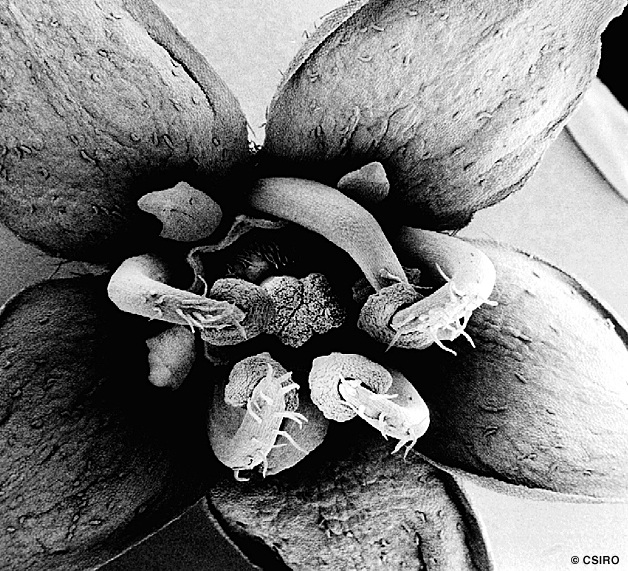
Mueller, F.J.H. von (1875) Fragmenta Phytographiae Australiae 9: 132. Type: In montibus altis prope Rockinghams Bay, eg. in monte Macallisteri; Dallachy.
Beech, Red; Maple Silkwood; Red Beech; Rose Silkwood; SIlkwood, Maple; Silkwood
Lenticels rusty, particularly where the roots join the stem.
Cotyledons much wider than long about 6-8 x 30-40 mm, bilobed. Oil dots small, only visible near the margins. First few pairs of leaves trifoliolate. At the tenth leaf stage: leaflet blades ovate, apex long-acuminate, base cuneate to attenuate and slightly unequal-sided, glabrous, oil dots absent; stalk of the terminal leaflet much longer than those of the lateral leaflets; petiole and rhachis of compound leaf slightly winged. Seed germination time 7 to 14 days.
Occurs in NEQ, widespread throughout the area. Altitudinal range from near sea level to 1300 m. Grows in well developed rain forest on a variety of sites but probably reaches its best development in upland and mountain rain forest. Also occurs in New Guinea.
This species produces a very good quality and very decorative cabinet timber. Because of World Heritage listing of North Queensland rainforest this timber is now in very short supply. Attempts to grow this tree in plantations generally end in failure. Although young plantations grow rapidly and well the architecture of large trees and crown sizes means that it is not possible to economically grow large trees which will produce timber of cabinet quality.
Sometimes used as a shade tree in parks and gardens.
The timber of this species can cause dermatitis.Formerly also used in the manufacture of barrels (cooperage) Swain (1928).
Leaf material of this species was active against some tumors. Collins et al. (1990).
Wood specific gravity 0.64 Cause et al. (1989).





